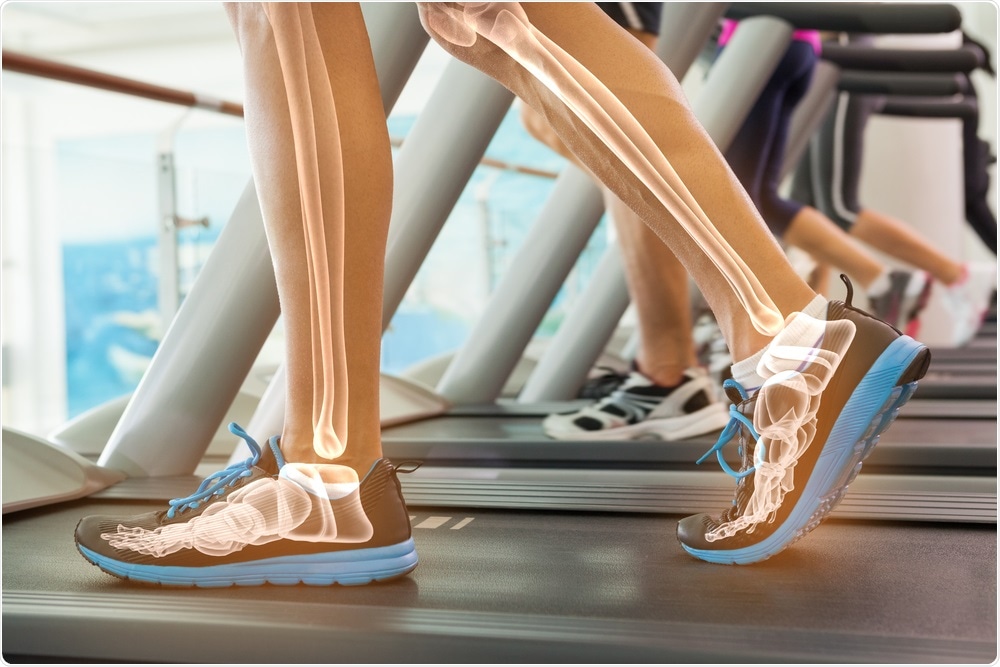In the first study of its kind, the antibacterial agent triclosan has been linked with an increased risk for osteoporosis among females in the US, particularly postmenopausal women. The research was recently published in The Journal of Clinical Endocrinology & Metabolism.
 wavebreakmedia | Shutterstock
wavebreakmedia | Shutterstock
Researchers at the Hangzhou Medical College School of Public Health in China found that women with higher levels of triclosan in their urine were more likely to have problems with their bones, compared with those with lower levels.
According to lead author Yingjun Li, studies have already shown that triclosan may have the potential to adversely affect bone mineral density in cell lines and animals, but little is known about the effect of the chemical on human bone health.
As far as we know, this is the first epidemiological study to investigate the association between triclosan exposure with bone mineral density and osteoporosis in a nationally representative sample from U.S. adult women.”
Yingjun Li, Lead Author
What is triclosan?
Triclosan is an antibacterial chemical that is widely used in personal hygiene products including soaps, toothpaste, hand sanitizers, and mouthwash.
However, it is an endocrine-disrupting chemical and in 2016, the United States Food and Drug Administration (FDA) banned its incorporation into soap products after manufacturers failed to provide the FDA with enough evidence that triclosan was safe and effective.
The demand for conclusive proof of safety was driven by research suggesting that the hormonal effect of triclosan exposure could represent a potential long-term public health risk. The following year, the FDA also banned companies from adding triclosan to over-the-counter antiseptic products, without premarket review.
Triclosan exposure and bone health
For the current study, Li and colleagues analyzed data available for 1,848 women who participated in the National Health and Nutrition Examination Survey between 2005 and 2010. They examined the association between urinary triclosan concentration and bone mineral density and osteoporosis in US women aged 20 years or older.
When the women were divided into tertiles for urine triclosan level, the researchers observed a significant association between tertile 3 and lower bone mineral density in regions of the total femur, the intertrochanter and the lumbar spine, compared with tertile 1.
Compared with the women in tertile 1, those in tertile 3 were 2.5 times more likely to have osteoporosis in the intertrochanter - the ridge that forms the base of the neck of the femur.
“We found urinary TCS [triclosan] concentration was negatively associated with BMD [bone mineral density] and was positively associated with the prevalence of osteoporosis. The evidence was stronger in postmenopausal women than in premenopausal women,” writes the team.
However, the findings cannot be taken as proof that triclosan causes osteoporosis since the women had also been exposed to other chemicals and the researchers say “future prospective studies are needed to validate the findings.”
Other health risks associated with triclosan
Research has also previously suggested that triclosan exposure is associated with a number of health issues, although none of the findings have been conclusive. Such studies have suggested an increased risk for food allergy and allergic contact dermatitis, a reduction in the level of thyroid hormones and the possibility that it could cause some bacteria to develop resistance to antimicrobials.
Concluding that triclosan causes osteoporosis is a “stretch”
Biochemistry professor Bruce Hammock from the University of California says the idea that triclosan may alter bone biochemistry does seem reasonable, but that to say exposure to the substance causes osteoporosis is a bit of a “stretch.”
People have to look at the benefits of triclosan to determine if the potential risks are worth taking. If it offers no benefit, any exposure gives you risk without benefit - so should be avoided.”
Bruce Hammock, University of California
Journal reference:
Cai, S., et al. (2019). Association between urinary triclosan with bone mass density and osteoporosis in the US adult women, 2005-2010. JCEM. https://doi.org/10.1210/jc.2019-00576.